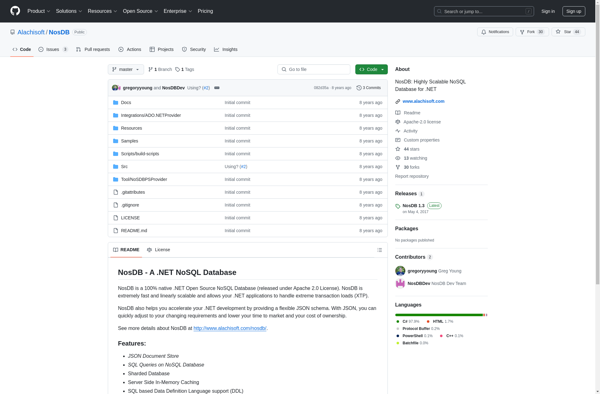CockroachDB

CockroachDB: Open-Source Distributed SQL Database
An open-source, distributed SQL database offering horizontal scaling, high availability, and ACID transactions for scalable and consistent data management across multiple datacenters.
What is CockroachDB?
CockroachDB is an open-source, distributed SQL database that provides scalability, survivability, and data consistency across multiple datacenters. Some key features include:
- Distributed architecture that scales horizontally
- Automated replication and failover for high availability
- Support for strongly consistent ACID transactions
- Geographic distribution of data across multiple datacenters
- Automatic rebalancing and repair after failures
- SQL interface with support for legacy database workloads
- Open source with a permissive Apache 2.0 license
CockroachDB is designed to tolerate hardware failures, datacenter outages, network issues, and even regional disasters with minimal downtime and no manual intervention. It aims to provide resilience comparable to Google's Spanner and F1 database systems. By scaling horizontally on commodity hardware, CockroachDB can handle massive datasets and high transaction volumes like traditional relational database systems. Its SQL interface supports existing enterprise workloads from databases like Oracle and PostgreSQL.
CockroachDB Features
Features
- Distributed SQL database
- Horizontal scaling
- High availability
- Fault tolerance
- ACID transactions
- Multi-datacenter support
- SQL compatibility
- Automatic replication and failover
- Geo-distributed deployments
- Automated data balancing
- SQL access for applications
Pricing
- Open Source
Pros
Cons
Official Links
Reviews & Ratings
Login to ReviewThe Best CockroachDB Alternatives
Top Development and Databases and other similar apps like CockroachDB
Here are some alternatives to CockroachDB:
Suggest an alternative ❐DBeaver

SQLite

Redis

MongoDB

PostgreSQL

MySQL Community Edition

MariaDB

Apache Cassandra

CouchDB

Microsoft SQL Server

SAP HANA

DbGate

Google Cloud Bigtable

Raven DB

HyperDex

Datomic

Hazelcast

Sybase Advantage Database Server

Orient DB

Bluzelle Decentralized DB

KeyDB

Oracle TimesTen

ScimoreDB
FleetDB

BigMemory

NosDB

Persevere

EJDB

ScaleOut
